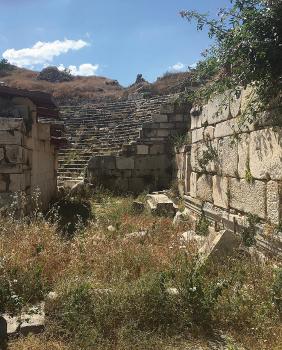American Journal of Archaeology | The Journal of the Archaeological Institute of America
You are here
Reading Visual Cues on the So-called Archive Wall at Aphrodisias: A Cognitive Approach to Monumental Documents
October 2021 (125.4)
Reading Visual Cues on the So-called Archive Wall at Aphrodisias: A Cognitive Approach to Monumental Documents
The experience of reading a monumental document is fundamentally different from reading a document as a text. Interdisciplinary studies on cognitive perception in neuroscience, psychology, and anthropology, together with recent projects on emotions in the field of classics, emphasize the importance of situating an experience in sensory contexts. This study will apply cognitive scholarship on the process of reading to assessments of how we perceive and read monumental documents. The so-called Archive Wall at Aphrodisias, more accurately described as an epigraphic dossier, perhaps even a monument of self-promotion, provides an ideal case study in terms of preservation and publication of documents in a monumental context. Building on a tradition of scholarship, I examine practical points in the experience of reading an inscribed document as a monument: the role of context, formulae, and visual cues. Assessing these aspects of monumental documents, I consider how monumental documents may have been read and why these documents attracted attention. The methodology approaches the process of reading by examining the physical context and visual cues on this epigraphic dossier and exploring how a general audience of passing viewers may have perceived and read this monument.
Reading Visual Cues on the So-called Archive Wall at Aphrodisias: A Cognitive Approach to Monumental Documents
By Abigail Schley Graham
American Journal of Archaeology Vol. 125, No. 4 (October 2021), pp. 571–601
DOI: 10.3764/aja.125.4.0571
© 2021 Archaeological Institute of America


